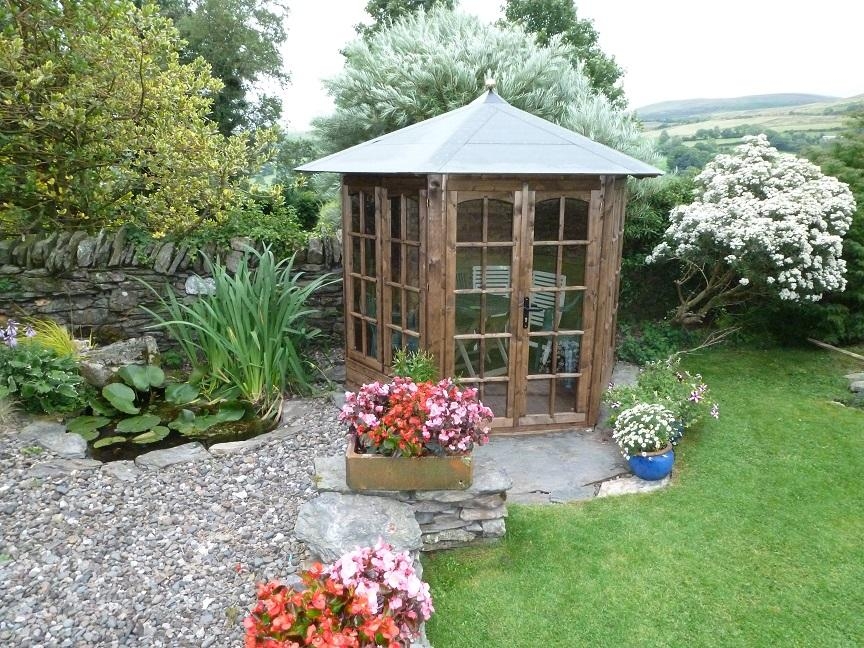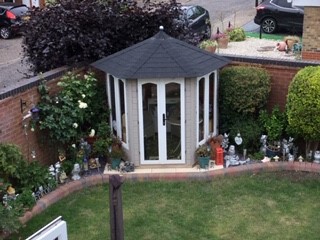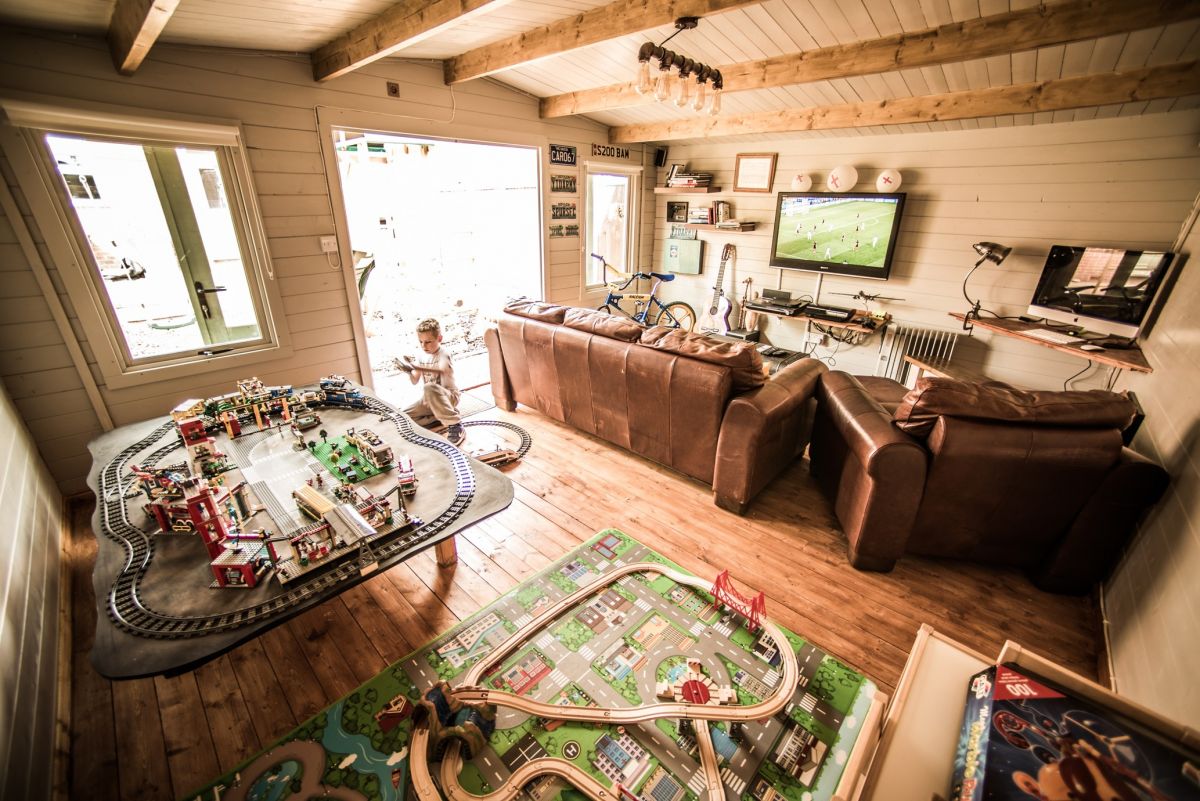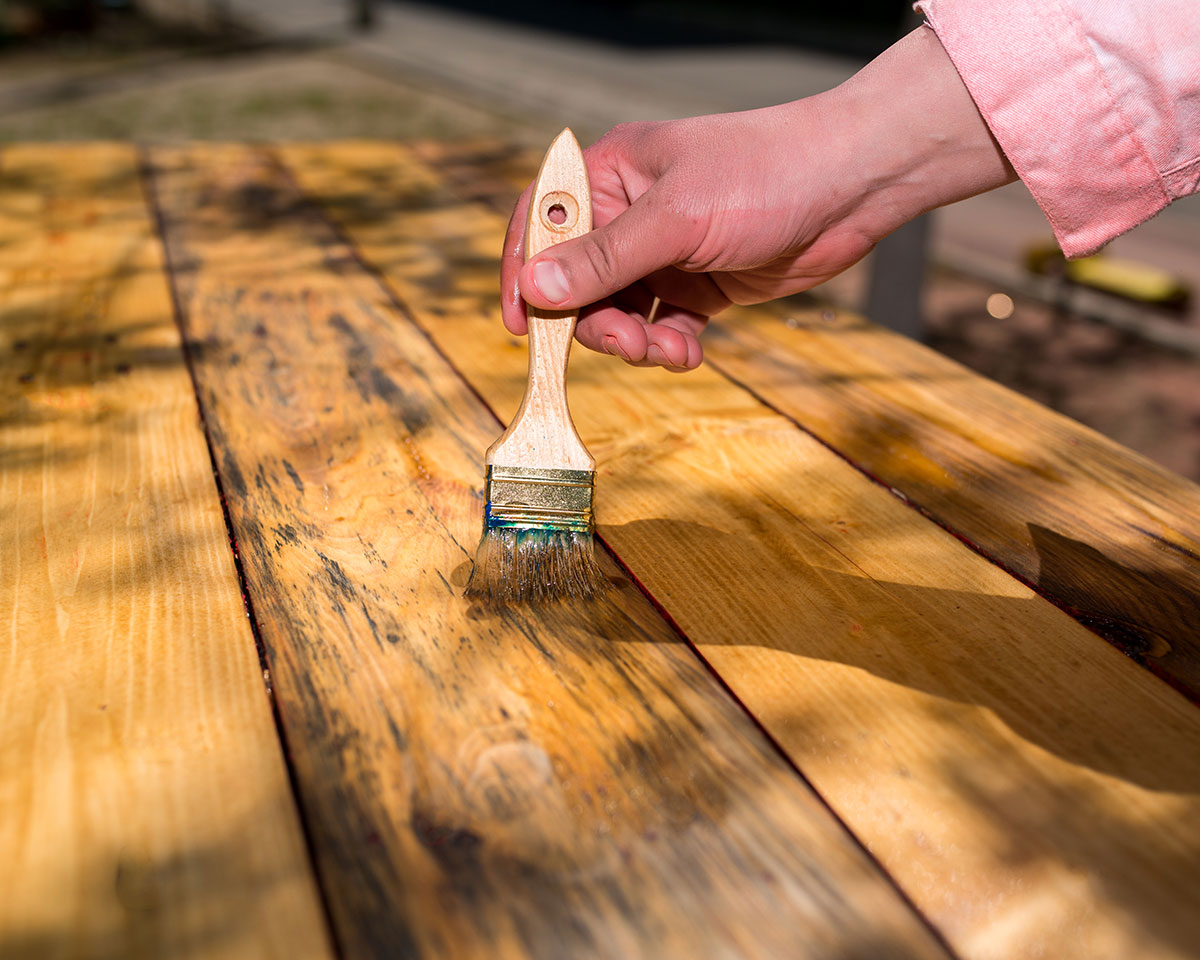Here at Dunster House, we produce high-quality garden buildings that are made to last – whatever life throws at them. Be it rain, sun, funguses or kids running wild, properly treating the wood of your structure will allow you to enjoy it for longer.
Preserving your garden building is easy and will prolong its good looks. We’ve created this simple step-by-step guide, to give you all the information you need to get started.
Why Are Some of Our Products Not Treated?

Due to the nature of the timber used, we do not pressure treat many of our garden structures in-house. However, it’s important to note that if you have bought one of our shed products, most will be pre-treated and if that’s the case you do not need to follow this guide.
Untreated Products Include:
- Log Cabins
- Summerhouses (though there are some exceptions)
- Log Garages
The bearers (the sections of the buildings in contact with the ground) are the only parts of the structures which are pressure treated, to prevent decay and insect infestation.
There are two reasons for not treating the whole structure in-house:
- It allows you to decorate and finish the building to suit your own individual taste.
- Treatment would have to be applied during the kiln drying stage – a process which ensures that all wood is reasonably sized and capable of locking together tightly and securely. This would result in each piece of wood absorbing different amounts of the preservative and expanding to different sizes, preventing the interlocking walls from fitting together.
The only way to eliminate this problem would be to stop using interlocking walls and instead use a panel system, as is the case with sheds.
What Will the Wood Treatment Do?
The wood treatment protects the timber from a number of factors, increasing its lifespan and making sure it looks its best. Treatments can contain:
- Water-repellent compounds to prevent dampness.
- Transparent iron oxide pigments absorb UV light, preventing the timber from being discoloured by the sun.
- Powerful fungicide to prevent decay and fungal growth.
How to Choose the Correct Treatment
There are a number of different stain based-treatments that you can use to protect your garden building:

- Water-based Wood Treatment – These are water resistant, easy to apply and dry quickly and evenly. They can be applied directly onto dry wood that is free from dirt, dust, wax, grease and organic growths. Ensure that previous coating and repellents are removed or sufficiently weathered, to allow the treatment to penetrate. For best results, sand the wood lightly in the direction of the grain before dusting off.
- Solvent and spirit based treatments – provide greater protection than water-based treatments whilst still being easy to apply. The treatment deeply penetrates the wood and will only need to be reapplied every three to four years, depending on weather conditions. For best results apply an even coating by brush.
- Pressure-treating – is more thorough than applications that rely on painting or spraying and involves preservatives being forced deep into the pre-cut timber. It also protects against fungicides and insect attacks but will still require additional water repellent to prevent rotting.
Step-by-Step Guide
You should treat the main structure of your building after assembly and decorating, with a micro-porous solution available directly from Dunster House.
- Choose your treatment – view our Extras range to find a suitable treatment for your structure. Alternatively, view the ‘Optional Extras’ when purchasing your garden building. You can choose from a variety of colours, enabling you to pick one that suits your tastes and location.
- Make sure the weather is right – You shouldn’t apply treatment in rainy weather conditions or direct sunlight.
- Ensure that the timber is clean and dry – for best results, first sand the wood lightly in the direction of the grain and then dust off.
- Prepare the building – use masking tape to protect the windows and hinges to prevent any transfer. You should also protect the base of your cabin with ground sheets.
- Prepare the treatment – stir the treatment gently with a wooden stick.
- Apply an even coating –taking care to ensure that you don’t overload the brush and paint with the grain. Start at the top of each panel and only do one panel at a time. Wait for each panel to dry before coating a second time. Make sure that you liberally coat any end grains to create a good seal. Your building shouldn’t require more than two coats.
When Should You Reapply?

Once you’ve applied your wood treatment, you need to make sure it’s properly maintained. Most treatments need to be reapplied every three to five years – your packaging should specify the life span of your particular product. However, this can depend on the weather conditions your building is exposed to.
To check if your treatment needs to be reapplied you should:
- Spray water onto the building exterior and see what happens – if the water beads and remains on the surface, your treatment should be OK for another year. If it soaks into the wood, you know it’s time for another coat. Make sure you also check the corners and ends of the logs, as they may be absorbing water, even if the rest of the building isn’t.
- Look out for rain damage and leaks – make sure to check for rain damage and leaks when you’re cleaning your building. This can alert you to areas that need re-treating or waterproofing with a silicone sealant. Common areas to look out for are the joints around the windows and doors, visible gaps on the log ends and interlocking corners from under the roof to the foundations.
If you have any further questions about treating your garden building, contact our friendly sales team by calling them at 01234 272445 or texting them at 07507331973.





